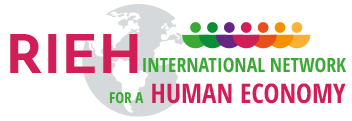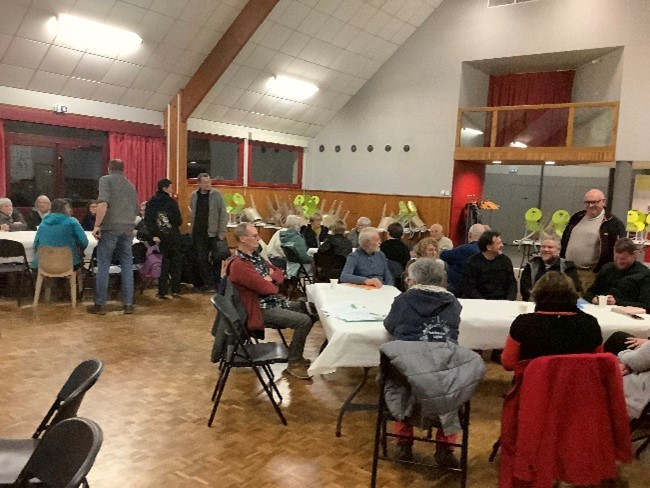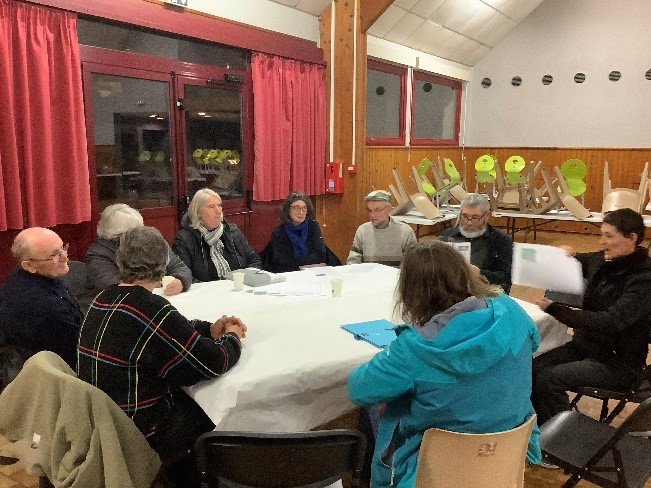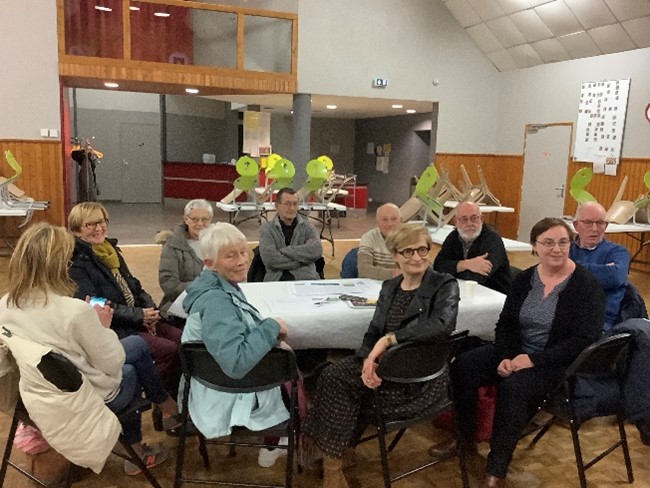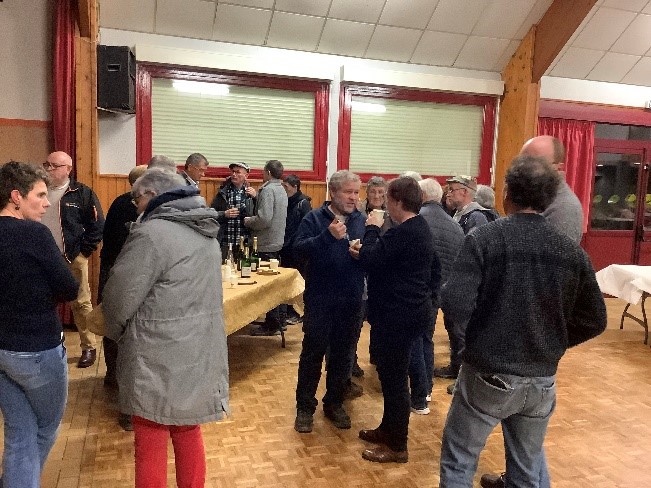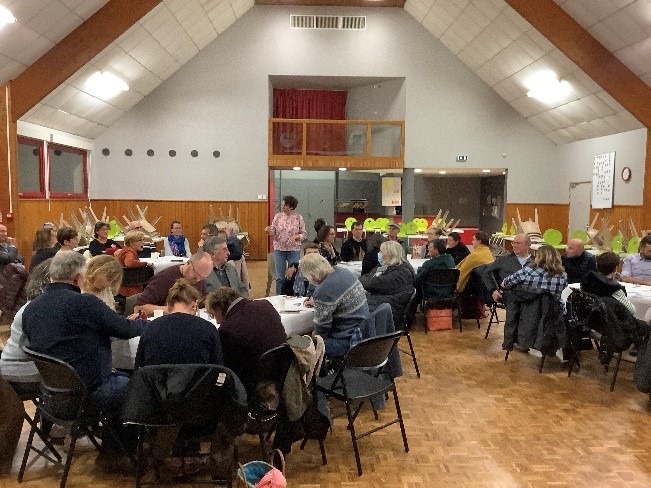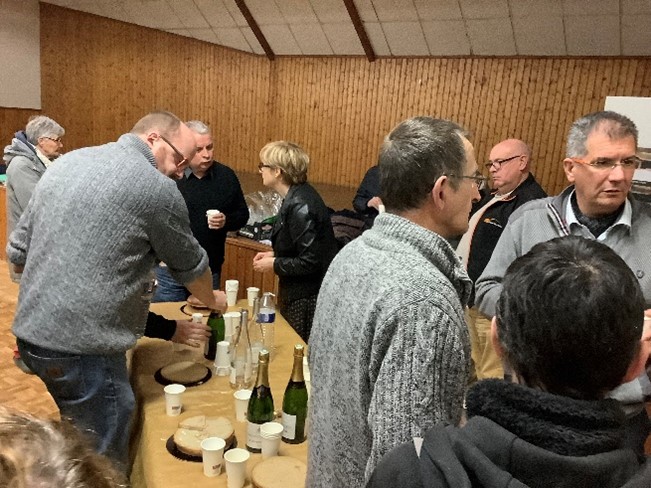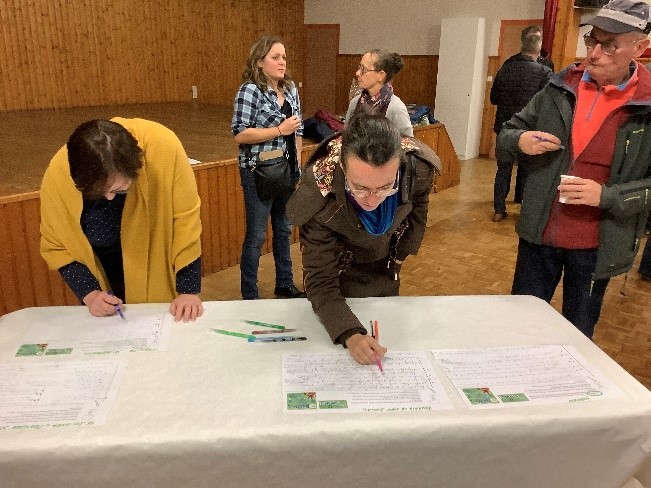Toutes les actualités (EN) 

"The future can't be predicted, it has to be built!"
Vous pouvez accéder à ce contenu en Français en cliquant sur ce lien : 
The town of Le Mené in Brittany hosts the office of the international secretariat of INHE, because for over fifty years it has been a territory on the road to Human Economy under the impetus of Paul Houée, who was very close to L-J Lebret. See the book Paths towards Human Economy. After a period devoted to organising the merger of 7 communes, the territorial dynamic has just been relaunched.
Marie Grippaudo, who is in charge of communications for INHE, lives in the commune and has been very committed to her region for many years, gives an account of this relaunch.
This was the slogan used by the Le Mené municipal team, led by Isabelle Le Gall (Director General of Services) and Florian Grass (Sustainable Development Officer) and chaired by Gérard Daboudet, the town's mayor, to invite residents to get together and discuss their daily living environment.
On Friday 17 November, in the Saint-Gouéno village hall, around fifty people from all over the commune responded to the call: associations, local authority staff, tenants, owners, farmers, employees, elected representatives, people who have been involved for a long time; however, whatever their status, they were all curious or invested in the dynamics of the area.
A welcome drink was offered to us, for an initial exchange or reunion, which was much appreciated.
Then, under the guidance of host Roseline Durand from the Atelier des petits ruisseaux, the evening's proceedings were presented, with an initial assessment of the territory's strengths and weaknesses.
Assets
- New commune since 1 January 2016 (investment leverage) ;
- Authentic and natural preserved environment;
- A dynamic energy sector (a pro-active area in terms of energy and ecological transition);
- A very large factory in the area: the slaughterhouse of Kermené is a subsidiary of the E. Leclerc Group since 1978, and a major player in the French food industry. 2,800 workers are employed at the Le Mené site, compared with 4,000 at the group's 7 other sites, all in Brittany;
- A low unemployment rate;
- A positive migratory balance;
- 128 vibrant cultural and sporting associations;
- Le Mené, a key local centre within the LCBC Communauté de communes de Loudéac Communauté Bretagne Centre. Le Mené has a proven track record of working together, thanks to its archipelago configuration, which has required commitment and participation from each of the 7 market towns. The competence of the Le Mené commune puts into perspective what the 42 communes of LCBC must achieve together: a strong common identity, it while retaining the culture of each. It is an example of action;
- School services and the presence of an ESD-labelled secondary school. The "E3D" label, which stands for École ou Établissement en Démarche globale de Développement Durable, was developed by the French Ministry of Education to recognise and encourage schools and educational establishments that are committed to a comprehensive approach to sustainable development;
- From a health point of view, an area recognised through the ZIP (Zone d'Action Prioritaire) scheme;
- Dynamic employees who are committed to their work;
- The emergence of a group of residents motivated to get involved in the Loudéac Communauté Bretagne Centre community of municipalities.
Weaknesses
- At 163.23 km2 in length, Le Mené is reputed to be the largest in Brittany. Situated in the extreme north-east of the Community of Communes, Le Mené is somewhat isolated and poorly served, particularly within the LCBC territory;
- Successfully consolidating the new commune from an identity point of view, it was born out of the transformation of the Le Mené Community of Communes into a new commune in 2016. As a result, the historic communes of Collinée, Langourla, Le Gouray, Plessala, Saint-Gilles-du-Mené, Saint-Gouéno and Saint-Jacut-du-Mené were "merged";
- Health services available, but under pressure;
- An ageing population;
- Fewer people working in agriculture, where there is a need to relocate farming and food production. Existence of a PAT LCBC (Territorial Food Plan);
- Little agricultural diversification in the area;
- Various tools piloted by LCBC PAT: territorial food projects aim to unite the various players in a given area around the issue of food, thereby helping to take account of the area's social, environmental, economic and health dimensions; PCAET: a planning tool that is both strategic and operational, enabling local authorities to address the whole range of air-energy-climate issues in their area; CRTE: Territorial Contract for Recovery and Ecological Transition;
All these national plans, absolutely essential in their implementation, lack simplicity in contacts. Organisational difficulties are still ongoing...
- Housing: ageing housing stock (fuel poverty);
- Ensuring the integration of allophone populations (whose mother tongue is not French) and vice versa to promote living together (more of a vigilance than a weakness).
The participants were then invited, according to their areas of interest, to take part in a round-table discussion on the living environment of its residents on a daily basis. 5 themes were chosen: Health, mobility, living together, shops and housing.
At each table, participants were free to express their views, based on their own experiences. A person appointed as "rapporteur" led the debate, and the results were then fed back to the group.
To complete the picture, the same exercise was repeated during the second workshop, which took place at the same time and place on 7 December.
New themes were raised around the ecological and energy transitions in the local economy:
Energy and the environment: - What new direction should the town set for itself in the future? - What actions and projects have been launched to continue Le Mené's pioneering approach to energy? - How can we raise residents' awareness of the challenges of energy transition? - How can we promote and care for the local environment?
For agriculture and food: - How can we maintain agricultural activity in the municipality in the future? - How can we encourage the establishment of high value-added agriculture? - How can we create more dialogue between farmers and residents? - How can we reduce the impact of farming on the climate, water resources and biodiversity? - What food policy should we choose for our children and elderly? - Helping local people to eat well.
For shops and services: - How can we maintain the fabric of shops and services in the face of the rise of online shopping? - What shops and services are missing in Le Mené? - What alternatives can be put in place to maintain a local economy in rural areas? - How can we support local people who are jobseekers (particularly allophones)?
3 tables are looking at the changes that need to be made, revealing the constant concern for territorial dynamics in the commune. A time for reflection that will enable us to exchange ideas and update information on what has already been achieved.
A full report will be provided by the organisers: the municipal team and the commissioned agency "les petits ruisseaux", run by a former member of the MIR Association. As a reminder, MIR (Mené Initiative Rural) was created in 1997 by farmers, in the wake of the Salon des Fourrages, organised in 1995 in Plessala. It has brought the Mené region to life and raised its profile through its various events, particularly those dedicated to the environment in the Côtes d'Armor. With a reputation as the commune's "itching powder", it worked with the elected representatives of the time to seek out, develop and install renewable energies as part of a real regional dynamic, and even became a forerunner at national level. An exceptional human adventure that has left its mark on the history of the region.
In conclusion, the aim of this citizen participation in the residents' workshops is to feed into the discussions and projects led by the municipality's elected representatives. It's an approach that has often been tried and tested in Le Mené, at key moments in its history. In this way, residents can share and learn from each other, become active players, gain confidence in their abilities and feel useful to the community in their role as citizens.
Collectively, the approach helps to create a local dynamic while sustaining the involvement of local residents. It facilitates action and fosters trust, proximity and conviviality between participants.
Marie Grippaudo
Head of INHE’s Communication
A resident of Le Mené, committed to her region





